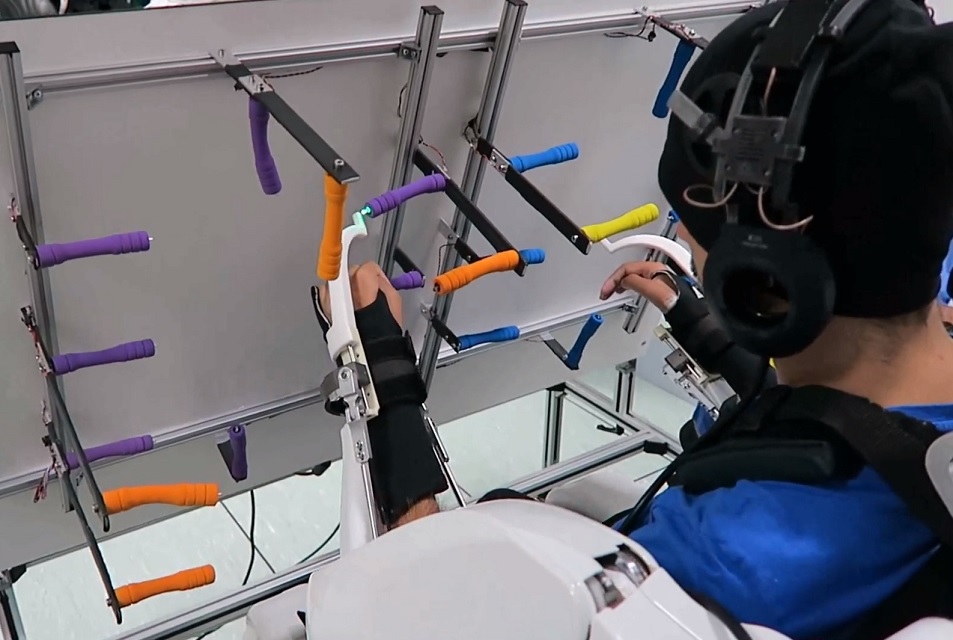A cervical spinal injury may be the most severe spinal cord injury, leaving nearly 20 percent of patients tetraplegic. That means all four limbs become completely or partially paralyzed.
However, a pioneering study suggests that a robotic exoskeleton could help with this condition. The system essentially records and decodes the patients’ brain signals to enable the movement of all four paralyzed limbs.
According to professor emeritus from the University of Grenoble, Alim-Louis Benabid, the system is the first of its kind. “It’s the first semi-invasive wireless brain-computer system designed for long term use to activate all four limbs,” he said.
Aside from using more invasive recording methods, previous brain-computer studies also had connected wires. As a result, they were only able to enable movement in one limb, the professor said.
Meanwhile, a 28-year-old tetraplegic patient was able to move his arms and walk via the new four-limb robotic system.
Here’s how it works.
How a Tetraplegic Man Walked Using a Four-Limb Robotic System
The researchers implanted two recording devices on both sides of the patient’s head in between the brain and the skin. They positioned the recorders such that it spans the sensorimotor cortex – part of the brain that controls sensation and motor function.
Also, each device had a grid of 64 electrodes, which not only collected brain signals but also transmitted them to a decoding algorithm.
In turn, the system translated the brain signals into movements from the patient’s thoughts. Then, it sends a command to the exoskeleton to complete the action.
For the duration of the 24-months study, the research team asked the tetraplegic participant to perform various mental tasks.
For example, he had to turn the brain switch on to make an avatar in a video game and the suspended exoskeleton walk — other tasks include using both hands to touch targets on a virtual cube as well as rotating both wrists.
As the training progressed, the researchers were able to train the algorithm further to understand the patients thought. As a result, his movement options with the machine increased.
In a statement, a neurosurgeon from the CHU of Grenoble-Alpes, Professor Stephan Chabardes said:
“Our findings could move us a step closer to helping tetraplegic patients to drive computers using brain signals alone, perhaps starting with driving wheelchairs using brain activity instead of joysticks and progressing to developing an exoskeleton for increased mobility.”
As promising as the early results are, the study authors note that the system is far from ready for clinical application. For one, the exoskeleton still depended on a ceiling-mounted harness for balance.
Further improvement is necessary to attain complete autonomy, said the research team.



















Comments (0)
Least Recent